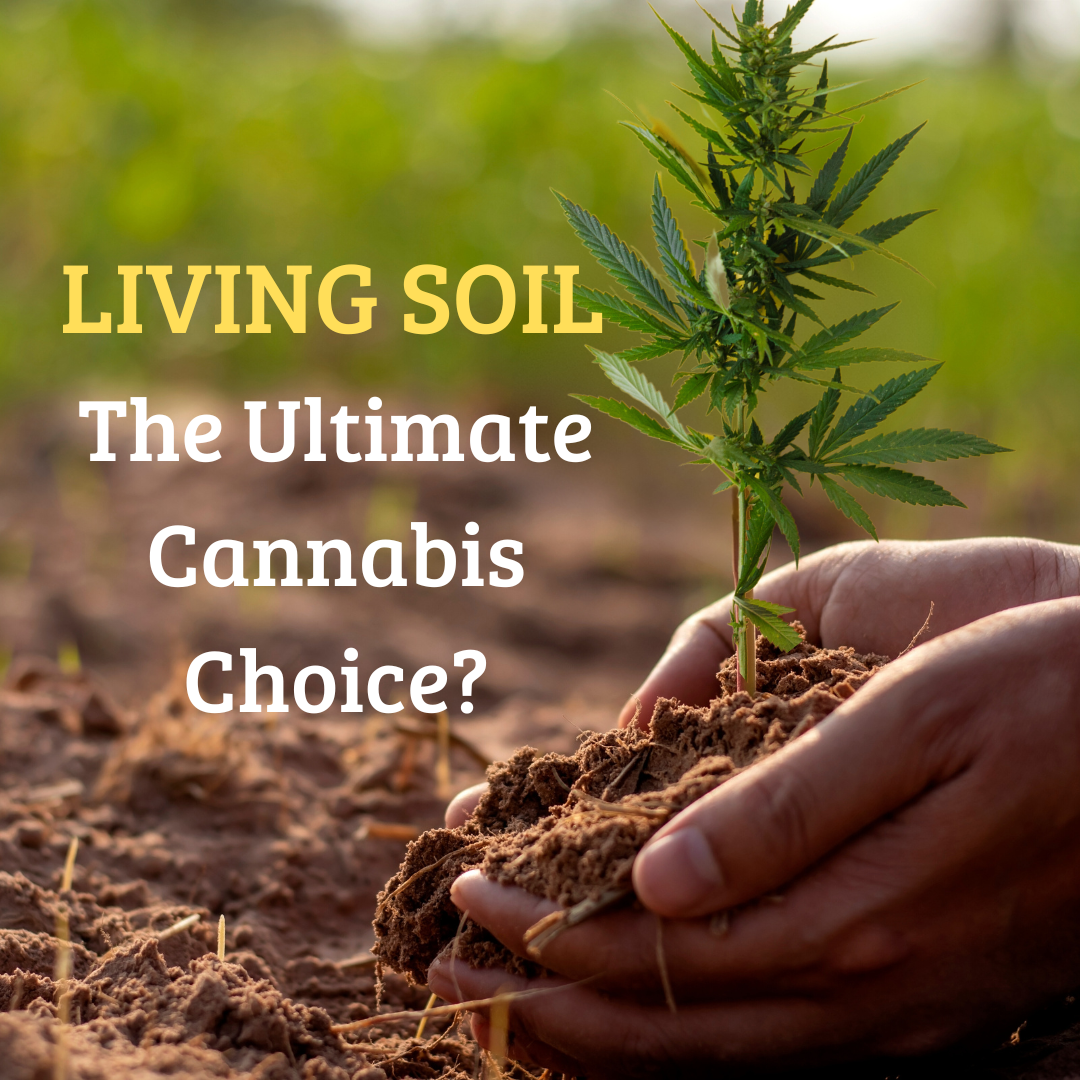
The Power Of Living Soil THCA Flower
In the realm of cannabis cultivation, the spotlight has shifted to an often-overlooked hero: the soil. But not just any soil – living soil. This revolutionary approach to cultivation has sparked a movement, backed by scientific research and sustainability principles, culminating in the creation of superior THCA flowers.
Recent studies, notably the research conducted by Columbia University, have underscored the pivotal role of living soil in nurturing a top-tier cannabis crop. These studies have illuminated the stark disparities in cannabinoid and terpene profiles between plants cultivated in living soil versus those grown hydroponically. This isn't merely a passing trend; it's a scientific breakthrough grounded in sustainable practices.

Understanding Living Soil and its Impact on THCA Flower Potency
So, what exactly is living soil? Contrary to conventional notions of soil merely as a medium for plant growth, experts like Dr. Elaine Ingham, in conjunction with insights from The Hemp Doctor, emphasize the distinction between "dirt" and "living soil." While dirt comprises inert particles, living soil is a bustling ecosystem teeming with microorganisms, from bacteria to earthworms. This dynamic community collaborates to convert organic matter into vital nutrients for plants, fostering a symbiotic relationship that has sustained fertile terrains for centuries.
THCA, or Tetrahydrocannabinolic Acid, has emerged as a subject of fascination for both researchers and consumers alike. Unlike its psychoactive counterpart THC, THCA remains non-psychoactive until decarboxylation occurs with heat exposure.
Producing THCA flowers begins with the meticulous selection of cannabis strains known for their high THCA content. These plants are nurtured in nutrient-rich living soil under optimal lighting conditions, shielded from pests, diseases, and nutrient deficiencies. Harvesting is timed precisely to coincide with peak THCA concentration, indicated by cloudy resinous trichomes visible under magnification. Post-harvest, careful drying and curing processes preserve THCA potency, while proper storage prevents conversion to psychoactive THC due to heat exposure.
Factors Influencing THCA Flower Potency
The potency of THCA flowers can vary across different batches due to several factors:
1. Genetic Diversity: Cannabis strains vary genetically, influencing THCA production.
2. Growing Conditions: Living soil fosters optimal conditions for maximizing THCA potency.
3. Harvest Timing: Harvesting at the right maturity stage ensures maximum THCA concentration.
4. Processing: Post-harvest handling can impact THCA content.

The Synergy of Living Soil and THCA Flower Production
Cultivating THCA flowers in living soil unlocks the plant's full genetic potential, optimizing THCA production. The dynamic microbial ecosystem of living soil creates a balanced environment conducive to robust cannabinoid and terpene profiles. This natural synergy not only enhances the quality of THCA-rich cannabis but also yields proprietary cannabinoid, terpene, and flavonoid blends, enriching the overall user experience.
Comparing Living Soil Cultivation with Traditional Methods
Studies and field observations suggest that cultivating hemp in living soil promotes enhanced terpene and cannabinoid production, particularly THCA. The nutrient-rich environment fosters optimal plant health, resistance, and yield while reducing reliance on synthetic fertilizers and pesticides, aligning with principles of sustainable agriculture.
Conclusion: Embracing Nature's Brilliance with Living Soil and THCA
In conclusion, the convergence of living soil and THCA represents a paradigm shift in cannabis cultivation, emphasizing the inherent brilliance of nature. At The Hemp Doctor, we embody this ethos, offering a range of THCA products, including prerolls and flowers cultivated in living soil. For consumers seeking superior quality, sustainability, and potency, the choice is clear: living soil and THCA lead the way towards a brighter, greener future.
